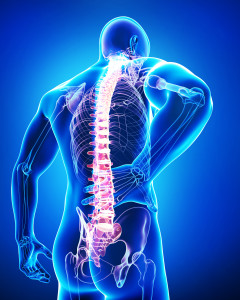 Persistent pain is very common and affects over 14 million people in the UK alone. In this article we look at what persistent pain is and how it differs from acute pain. We also offer advice, hints and tips on how you can best manage, if you are living with persistent pain.
Persistent pain is very common and affects over 14 million people in the UK alone. In this article we look at what persistent pain is and how it differs from acute pain. We also offer advice, hints and tips on how you can best manage, if you are living with persistent pain.
What is persistent pain and how does it differ from acute pain?
Pain, whilst unpleasant, can be a very useful sensation to have. Short-term or ‘acute’ pain helps us learn from our experiences and protects us from future injury. It is part of our natural healing process. For example, if you burn yourself on a hot stove, you might learn to be more wary in future and the discomfort of any blisters would remind you to keep the area clean and protected from infection.
The common approaches to acute pain, for example immediate pain that you feel after an injury or strain, includes avoiding the cause, applying ice or heat packs and engaging in light activity which may help to ease the worst of the symptoms. As the problem resolves, the pain tends to improve and usually disappears within 3-6 months. However when pain continues over a longer period of time, it becomes what is known as ‘persistent pain’ which will require further management. This type of pain has no clear beneficial purpose and may not respond well to the conventional treatments you would use for acute pain, such as anti-inflammatory or analgesic painkillers.
If the pain you are experiencing is from arthritis then visit our separate arthritis advice section which provides guidance on how to best manage your condition.
So am I suffering from ‘Acute pain’ or ‘Persistent pain’?
We’ve put together this handy table to help you identify whether your pain could be described as acute or persistent:
| Acute Pain | Chronic or persistent pain |
| Rapid onset | Persistent after an acute episode or gradually builds up |
| Useful Pain | No clear beneficial purpose |
| Diagnosis can be made | Diagnosis is often uncertain |
| The cause is usually clear | The cause is often unclear due to a ‘confused nervous system’ |
| Change can often be seen visually or with tests and scans | Examinations such as blood tests and scans may not identify any change |
| Short term (6 – 12 weeks) | Longer than 6 weeks and often persists |
| Associated with signs of inflammation (Swelling, redness etc…) | Not usually associated with inflammation (though swelling can still occur) |
| Often responds well to treatment including pain killers and anti-inflammatories | May not respond to treatment |
What if I have persistent pain?
Sometimes, if you have had persistent pain for a long time, the nervous system can become more sensitive to pain, so previously non-threatening events, such as a change in the weather or the light pressure of the duvet on your skin at night, can now be perceived as painful. This effect, known as ‘central sensitisation’ may also mean that your symptoms may vary from day to day for no obvious reason.
Examinations such as blood tests and x-rays may not identify the reasons for the pain, making it harder for your doctor to make a diagnosis. As such, persistent pain can be difficult to diagnose. As a result, some people can feel that others don’t believe they are in pain or don’t understand what they are going through which can make their experience even more distressing.
| Things that increase your pain | Things that decrease your pain |
| Stress | Relaxation |
| Tension | Deep breathing |
| Thinking about the pain and the difficulties | Distraction and fun (eg. hobbies, music, study, work, friends) |
| Immobility and reduced fitness | Graded exercise will release pain relieving and mood enhancing chemicals |
| Over-activity (Doing too much and not pacing yourself) | Pacing activity |
How your osteopath can help
As highly trained healthcare practitioners, osteopaths are able to assess and examine you to establish the potential causes of pain and recommend if you should be referred to a GP or other healthcare practitioner, if your pain requires further investigation. If you are experiencing persistent pain, your osteopath may able to advise on graded exercises and provide manual therapy which research suggests may stimulate the body to produce strong natural painkillers (endorphins) that can be of benefit. To find your local osteopath, click here.


